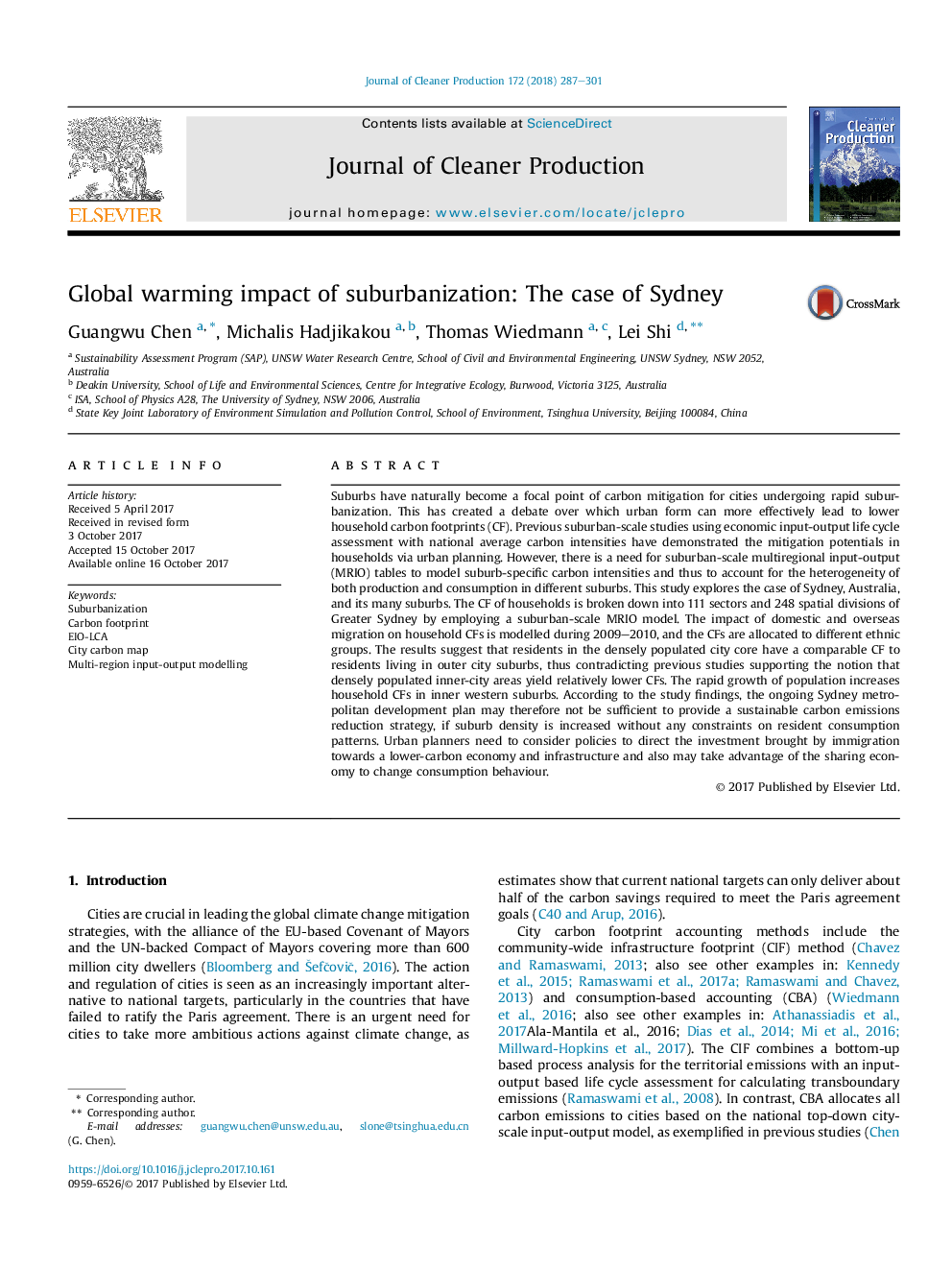| کد مقاله | کد نشریه | سال انتشار | مقاله انگلیسی | نسخه تمام متن |
|---|---|---|---|---|
| 8099831 | 1522081 | 2018 | 15 صفحه PDF | دانلود رایگان |
عنوان انگلیسی مقاله ISI
Global warming impact of suburbanization: The case of Sydney
ترجمه فارسی عنوان
تأثیر گرمایش جهانی حومه سازی: مورد سیدنی
دانلود مقاله + سفارش ترجمه
دانلود مقاله ISI انگلیسی
رایگان برای ایرانیان
موضوعات مرتبط
مهندسی و علوم پایه
مهندسی انرژی
انرژی های تجدید پذیر، توسعه پایدار و محیط زیست
چکیده انگلیسی
Suburbs have naturally become a focal point of carbon mitigation for cities undergoing rapid suburbanization. This has created a debate over which urban form can more effectively lead to lower household carbon footprints (CF). Previous suburban-scale studies using economic input-output life cycle assessment with national average carbon intensities have demonstrated the mitigation potentials in households via urban planning. However, there is a need for suburban-scale multiregional input-output (MRIO) tables to model suburb-specific carbon intensities and thus to account for the heterogeneity of both production and consumption in different suburbs. This study explores the case of Sydney, Australia, and its many suburbs. The CF of households is broken down into 111 sectors and 248 spatial divisions of Greater Sydney by employing a suburban-scale MRIO model. The impact of domestic and overseas migration on household CFs is modelled during 2009-2010, and the CFs are allocated to different ethnic groups. The results suggest that residents in the densely populated city core have a comparable CF to residents living in outer city suburbs, thus contradicting previous studies supporting the notion that densely populated inner-city areas yield relatively lower CFs. The rapid growth of population increases household CFs in inner western suburbs. According to the study findings, the ongoing Sydney metropolitan development plan may therefore not be sufficient to provide a sustainable carbon emissions reduction strategy, if suburb density is increased without any constraints on resident consumption patterns. Urban planners need to consider policies to direct the investment brought by immigration towards a lower-carbon economy and infrastructure and also may take advantage of the sharing economy to change consumption behaviour.
ناشر
Database: Elsevier - ScienceDirect (ساینس دایرکت)
Journal: Journal of Cleaner Production - Volume 172, 20 January 2018, Pages 287-301
Journal: Journal of Cleaner Production - Volume 172, 20 January 2018, Pages 287-301
نویسندگان
Guangwu Chen, Michalis Hadjikakou, Thomas Wiedmann, Lei Shi,
